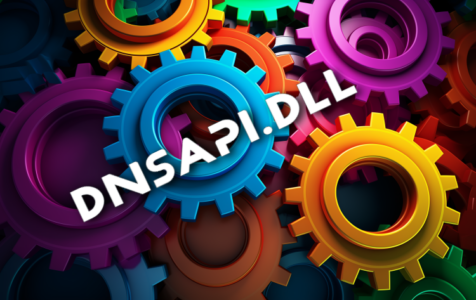The dnsapi.dll file forms a critical part of the Microsoft Windows operating system, specifically concerning the Domain Name Service (DNS) Client tasks. The acronym DNSAPI stands for Domain Name System Client API (Application Programming Interface) Function Library, highlighting its role in the translation process between human-friendly domain names and the numeric IP addresses that computers use to communicate over the Internet.
This essential file resides in the “C:\Windows\System32” directory on 64-bit Windows systems (in SysWOW64 for the 32-bit version), and typically, you wouldn’t need to interact with it during regular computer use.
Is Dnsapi.dll Safe to Run?
Under typical circumstances, dnsapi.dll is completely benign and essential for Windows operations that involve DNS. However, because of its crucial role in Internet communications, it can be a target for malware. Malicious programs might attempt to replace or modify the genuine dnsapi.dll with a harmful version to intercept or redirect network communications.
Can Dnsapi.dll Be a Virus or Malware?
Yes, it is possible. Some malware disguises itself as dnsapi.dll and can be situated in the same directory as the legitimate file, making it harder to distinguish between the two. Notorious malware like RDN/Generic.dx and variants targeted by TrendMicro are known for such deceptive practices. Therefore, it’s imperative to ensure the integrity of dnsapi.dll using reliable security software.
Expert Tip: For smoother PC performance, consider using a PC optimization tool. It handles junk files, incorrect settings, and harmful apps. Make sure it's right for your system, and always check the EULA and Privacy Policy.
Special offer. About Outbyte, uninstall instructions, EULA, Privacy Policy.
How to Fix Dnsapi.dll Related Issues?
Troubles related to dnsapi.dll can manifest in various forms, from being flagged by security software to error messages stating that the file is missing or not found. Correcting these issues typically involves:
1. Running a Malware Scan: Use trusted anti-malware tools such as Malwarebytes to thoroughly scan and remove any potential threats. Ensure your security software is up-to-date to avoid false positives.
2. Perform System Cleanups: Routine maintenance actions, including disk cleanup (cleanmgr) and a system file check (sfc /scannow), can prevent and address system issues. Enabling Windows Automatic Updates will also help keep your system patched against vulnerabilities.
3. Restoring or Replacing the File: If dnsapi.dll is indeed missing or corrupted (and not due to malware), restoring it from a trusted source may be necessary.
4. Editing or Repairing the Registry: Some advanced users might choose to use tools like Autoruns to identify and delete residual startup entries or registry keys that might be causing startup errors related to dnsapi.dll. Since editing the registry or system files carries risks, it should only be attempted by those with adequate knowledge or under expert guidance.
Community Discussions
Online communities, such as forums on Microsoft.com and HardForum, provide a wealth of user experiences and discussions surrounding dnsapi.dll. Users have shared their troubleshooting stories ranging from editing the dnsapi.dll file for specific reasons such as removing hard-coded telemetry domains to requesting help for removal of potential malware infections.
For a more in-depth look at community experiences and discussions, you can visit the following resources:
Microsoft Community Discussion on dnsapi.dll Error
HardForum Discussion on Editing dnsapi.dll
In summary, the dnsapi.dll file is a vital Windows system file that should not be removed or disabled recklessly. Any issues related to it merit caution and are often best resolved by using trusted antivirus or anti-malware software, and, only if necessary, retrieving the correct file version from a reputable source.
